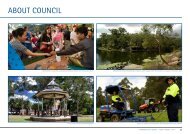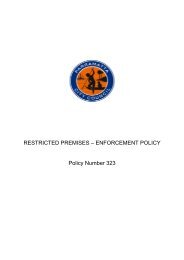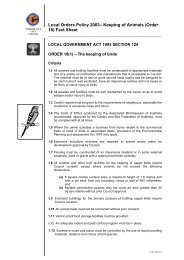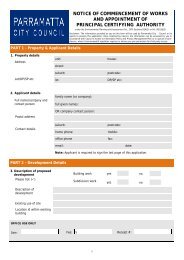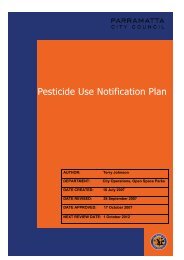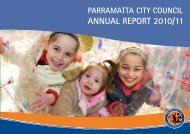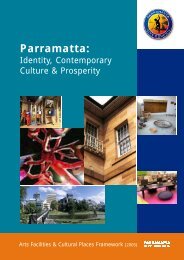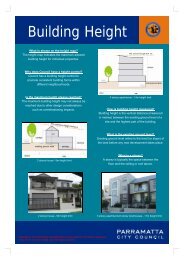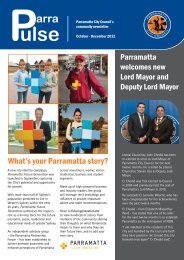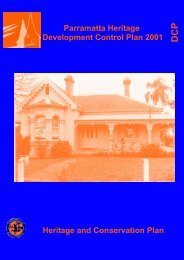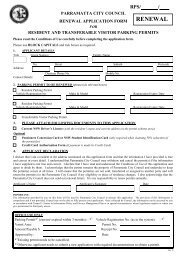Part 1 Western Sydney Light Rail Feasibility Report - Parramatta City ...
Part 1 Western Sydney Light Rail Feasibility Report - Parramatta City ...
Part 1 Western Sydney Light Rail Feasibility Report - Parramatta City ...
Create successful ePaper yourself
Turn your PDF publications into a flip-book with our unique Google optimized e-Paper software.
6.1 Transport and land use modellingA robust spread sheet transport and land use model was developed for this study. The model reported onthe weekday morning peak 3.5 hours (6.00 am–9.30 am).6.1.1 Key modelling assumptions and mode considerationAs noted previously, the alignments selected were not mode specific and considered intermediate transitalignment options. Consideration to mode was given at this point in the study. The following characteristicswere adopted for light rail transit (LRT) and bus rapid transit (BRT):• both assumed to operate at 30 kph (including picking up passengers)• within the generalised cost equations, the in-vehicle time (IVT) weight is different (BRT = 0.9,LRT = 0.85) reflecting a more positive perception of travel by light rail over bus (based on AustralianTransport Council (ATC) Guidelines)• a service frequency for BRT (12 services per hour in each direction) of double that of LRT (6 servicesper hour in each direction) to maintain the same capacity on the route for each mode.A complete set of alternative land use forecasts (population and employment) were developed for eachalignment, mode and forecast year. These forecasts were to reflect additional growth that might begenerated by improved public transport. The core adjustments to land use are made for each light railalignment in 2031 and applied to the base BTS forecasts, and it has generally been assumed that light railwill generate greater growth than BRT due to the generally more positive perception of this mode and thepotential for developments to be marketed on this perception.Transport modelling outputs are included under each alignment later in this chapter.Economic modellingUsing inputs from the land use and transport modelling, an economic study of the potential future networkwas undertaken. The objectives were to assess the ability of the future network to achieve desired outcomesand identify the wider economic impacts of the network (light rail operation). This is not a formal economicappraisal, and further detailed analysis is required to conduct a cost benefit analysis. The study adopted a‘multi-faceted’ approach which applied aspects from a range of methodologies to provide a snap-shot of theconventional and wider economic benefits and impacts of WSLR. Taken together, the outputs of theEconomic Study provide a holistic view of economic merit.Figure 6.2 presents the results of the economic study and Table 6.1 outlines the set of financial and fulleconomic indicators developed to quantify and monetise (where possible) the impact of the light rail network.26 <strong>Parramatta</strong> <strong>City</strong> Council <strong>Western</strong> <strong>Sydney</strong> <strong>Light</strong> <strong>Rail</strong> Network - <strong>Part</strong> 1 <strong>Feasibility</strong> <strong>Report</strong>



